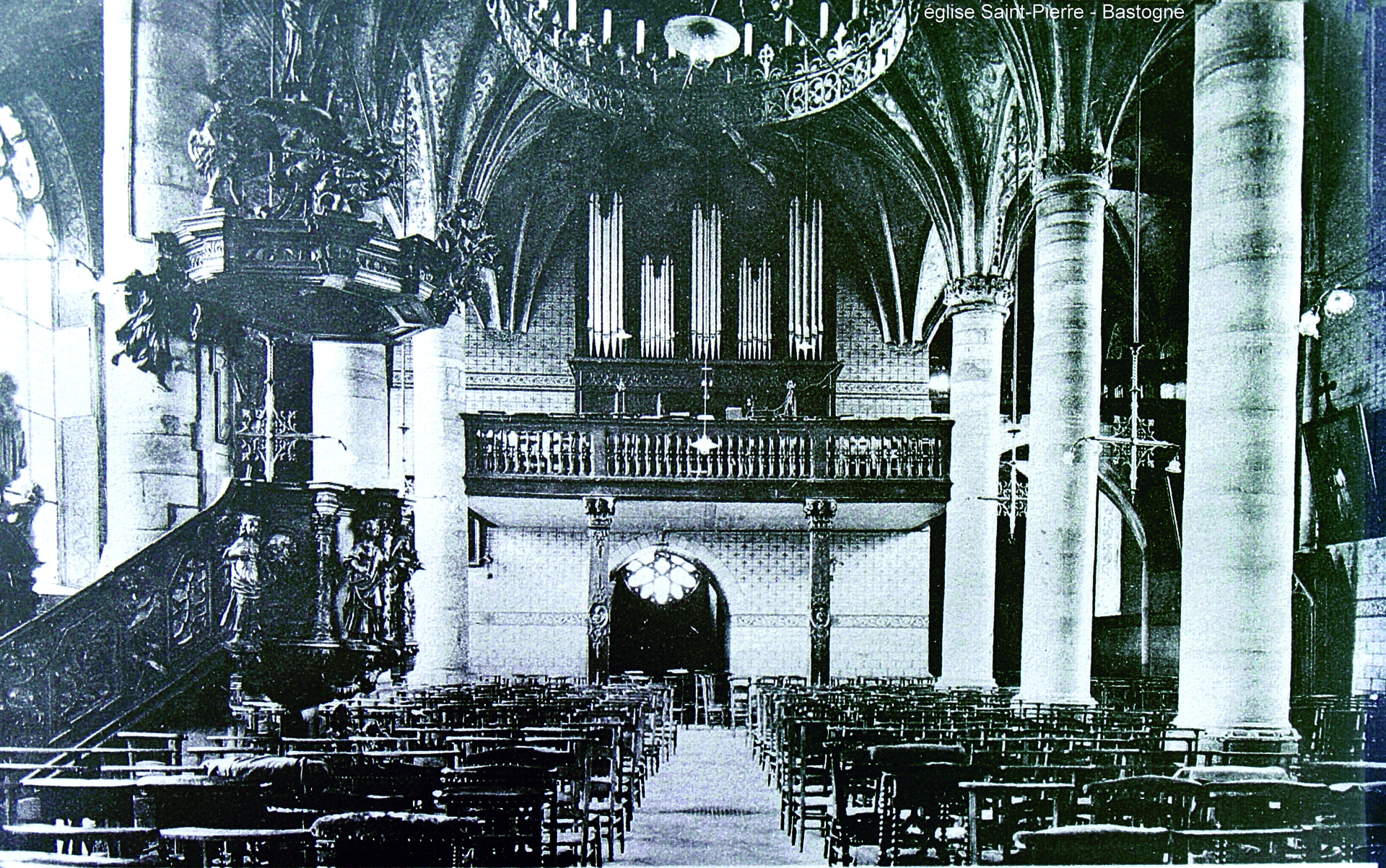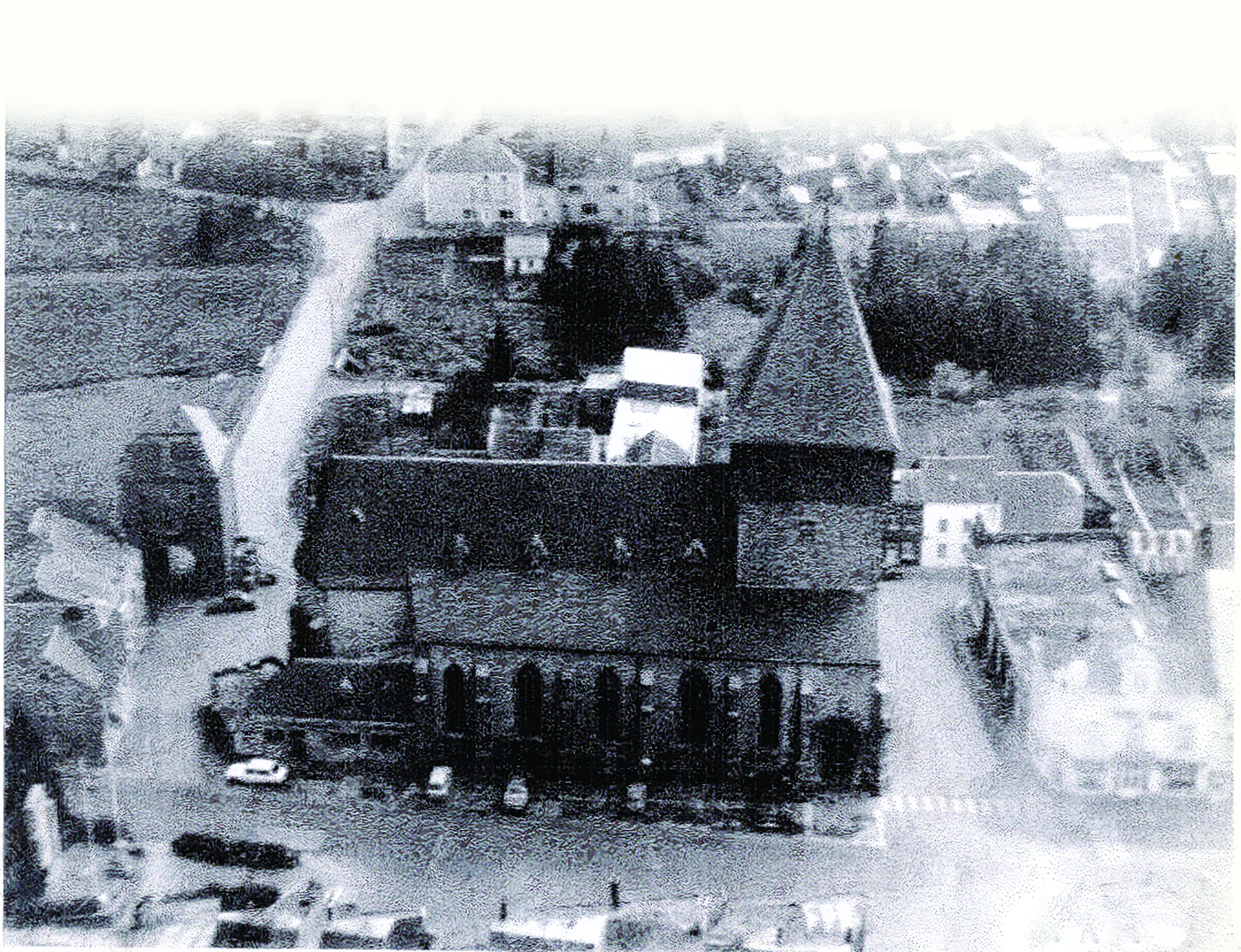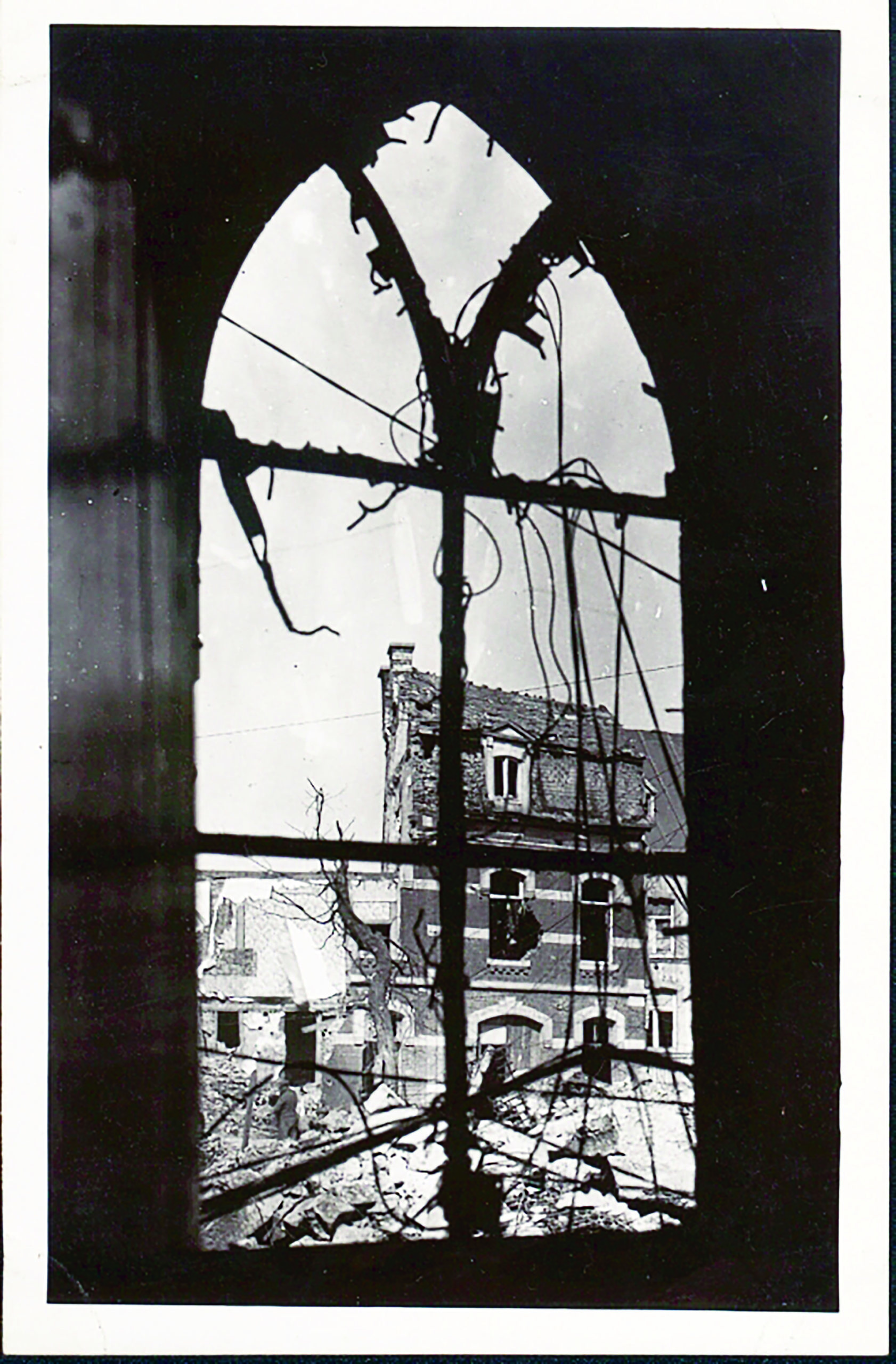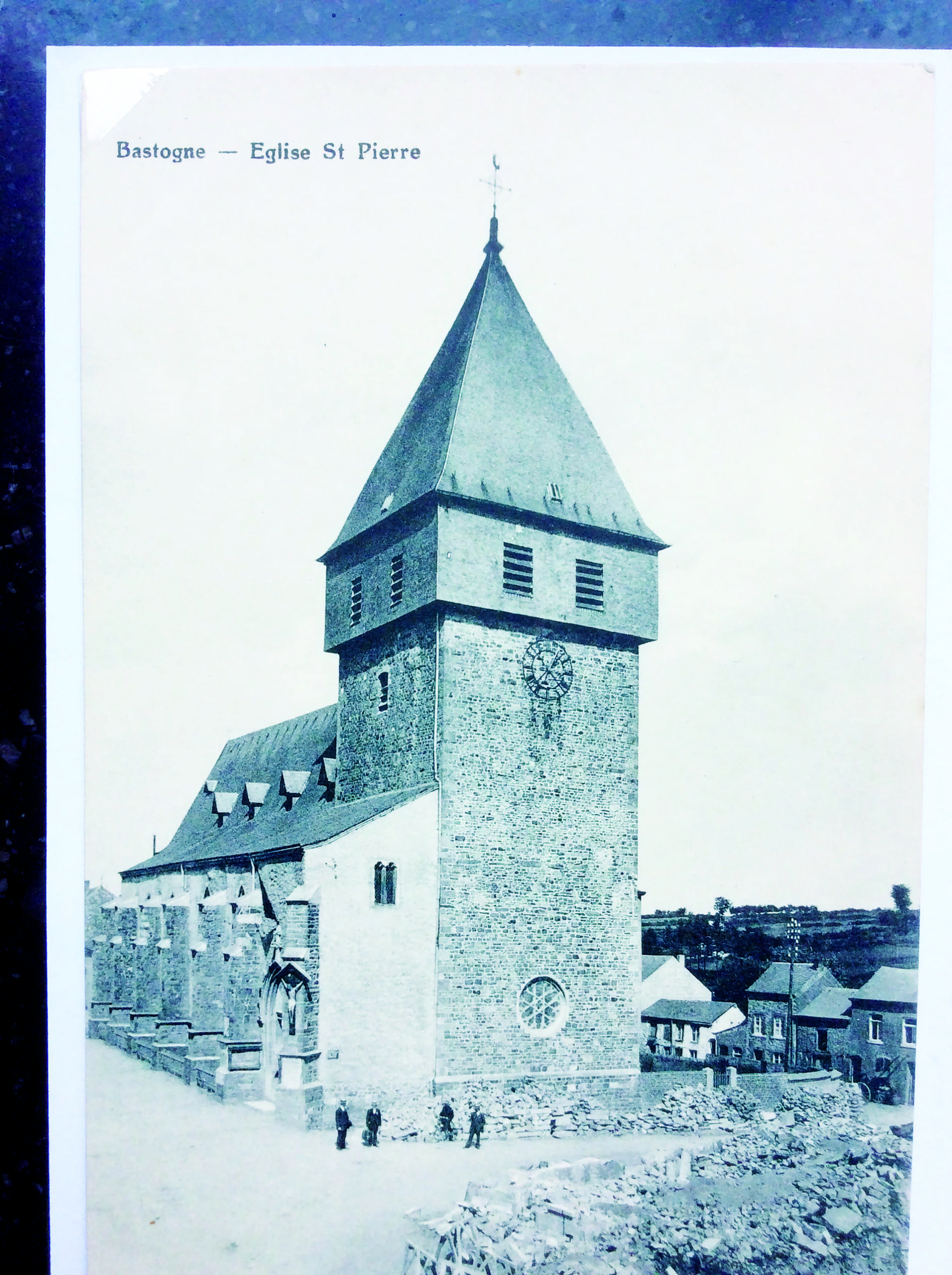Histoire générale
La première trace écrite de l’église Saint-Pierre remonte à 893, date à laquelle elle est qualifiée d’Ecclesia Matrix ou église-mère. Cela témoigne du caractère ancien et déjà très important de l’édifice, car on emploie ces termes pour parler d’une église présente avant toutes les autres du diocèse. Elle est dédiée à saint Pierre, apôtre de Jésus et premier pape.
Ce style d’église est très rare en Belgique : il s’agit du type Hallenkirche ou église-halle, que l’on retrouve plutôt dans les régions de tradition germanique. Avec ses 42 mètres de long et ses 18,5 mètres de large, l’édifice est imposant.
La tour, qui rappelle un donjon médiéval, ne fait qu’augmenter cette impression d’église fortifiée grâce à ses 40 mètres de haut. Les archives mentionnent qu’un guetteur surveillait la ville depuis une galerie dans le haut de la tour, jusqu’à la fin du 18e siècle. En cas d’attaque, des trappes aménagées dans le plancher de la galerie permettaient de laisser tomber des projectiles sur l’ennemi.
L’église a connu plusieurs états successifs, notamment en raison des destructions subies et des restaurations qui ont suivi. C’est d’ailleurs suite à l’attaque des Liégeois en 1236 et à la destruction partielle de l’église primitive (11e siècle) que celle-ci a été reconstruite dans un style plus imposant à trois nefs, celui que l’on connait aujourd’hui.
Durant la Seconde Guerre mondiale, l’église Saint-Pierre a subi de lourds dégâts. Transformée en hôpital militaire pendant le siège de Bastogne, l’église apparait dans plusieurs scènes de la série Band of Brothers, de Steven Spielberg. Après la Bataille des Ardennes et l’offensive von Rundstedt de décembre 1944, la toiture était effondrée, les vitraux étaient soufflés et le patrimoine mobilier, ainsi que l’orgue, étaient détruits. Cela a entrainé une nouvelle campagne de restauration durant plusieurs années, suivie d’autres modifications tout au long du 20e siècle.
Algemene geschiedenis
De eerste schriftelijke vermelding van de Sint-Pieterskerk dateert van 893, wanneer zij de Ecclesia Matrix of moederkerk wordt genoemd. Dit toont het oude en reeds zeer belangrijke karakter van het gebouw, aangezien deze termen worden gebruikt om te verwijzen naar een kerk die bestond vóór alle andere in het bisdom. Zij is gewijd aan Sint-Pieter, de apostel van Jezus en eerste paus.
Deze kerkstijl is zeer zeldzaam in België: het gaat hier om het type Hallenkirche of hallenkerk, dat eigenlijk vooral voorkomt in streken met een Germaanse traditie. Het is een imposant gebouw, 42 meter lang en 18,5 meter breed.
De 40 meter hoge toren, die doet denken aan een middeleeuwse donjon, versterkt de indruk van een versterkte kerk. Uit documenten blijkt dat er tot het einde van de 18e eeuw, vanuit een galerij helemaal bovenaan de toren, een uitkijkpost over de stad waakte. In geval van een aanval konden via luiken in de galerijvloer projectielen op de vijand worden gedropt.
De kerk is in verschillende staten van verval geraakt, niet in het minst door de vernielingen die ze heeft ondergaan en de restauraties die daarop volgden. Na de aanval van de Luikenaren in 1236 en de gedeeltelijke verwoesting van de oorspronkelijke kerk (11e eeuw), werd ze herbouwd in de imposantere driebeukige stijl die we vandaag kennen.
Tijdens de Tweede Wereldoorlog werd de Sint-Pieter’s kerk zwaar beschadigd. Gedurende het beleg van Bastogne werd ze als militair hospitaal gebruikt. Ze was zelfs te zien in verschillende scènes van de Steven Spielberg serie « Band of Brothers ». Na de Slag om de Ardennen en het von Rundstedt offensief in december 1944 bleef er niet veel overeind: het dak was ingestort, de glas-in-loodramen eruit geblazen en het meubilair en het orgel vernield. Dit leidde tot een nieuwe restauratiecampagne die enkele jaren geduurd heeft en waarop later in de loop van de 20e eeuw, nog verdere aanpassingen volgden.
General history
The first written record of St. Peter’s Church dates back to 893. It was then referred to as the Ecclesia Matrix or Mother Church. This shows the ancient and already very important character of the building, as these terms are used to refer to a church that existed before all the others in the diocese. It is dedicated to St. Peter, the apostle of Jesus and first pope.
This style of church is very rare in Belgium: it is of the type Hallenkirche or hall church type, which is more common in regions with a Germanic tradition. The building is 42 metres long and 18.5 metres wide.
The tower, which is reminiscent of a medieval dungeon, only adds to the impression of a fortified church and is 40 metres high. Records show that a lookout watched over the town from a gallery in the top of the tower until the end of the 18th century. In the event of an attack, hatches in the gallery floor were used to drop projectiles on the enemy.
The church has been through a number of transformations, not in the least because of the destruction it has suffered and the various phases of restoration. Following the attack by the Liège inhabitants in 1236 and the partial destruction of the original church (11th century), it was rebuilt in the more imposing three-aisle style we know today.
Also, during the Second World War, St Peter’s suffered heavy damage. It was converted into a military hospital during the siege of Bastogne and appears in several scenes of Steven Spielberg’s series Band of Brothers. After the Battle of the Bulge and the von Rundstedt offensive in December 1944, the roof collapsed, the stained glass windows were blown out and the furniture and the organ were lost. This led to a new restoration campaign, which lasted several years, and which was followed by further modifications in the course of the 20th century.




